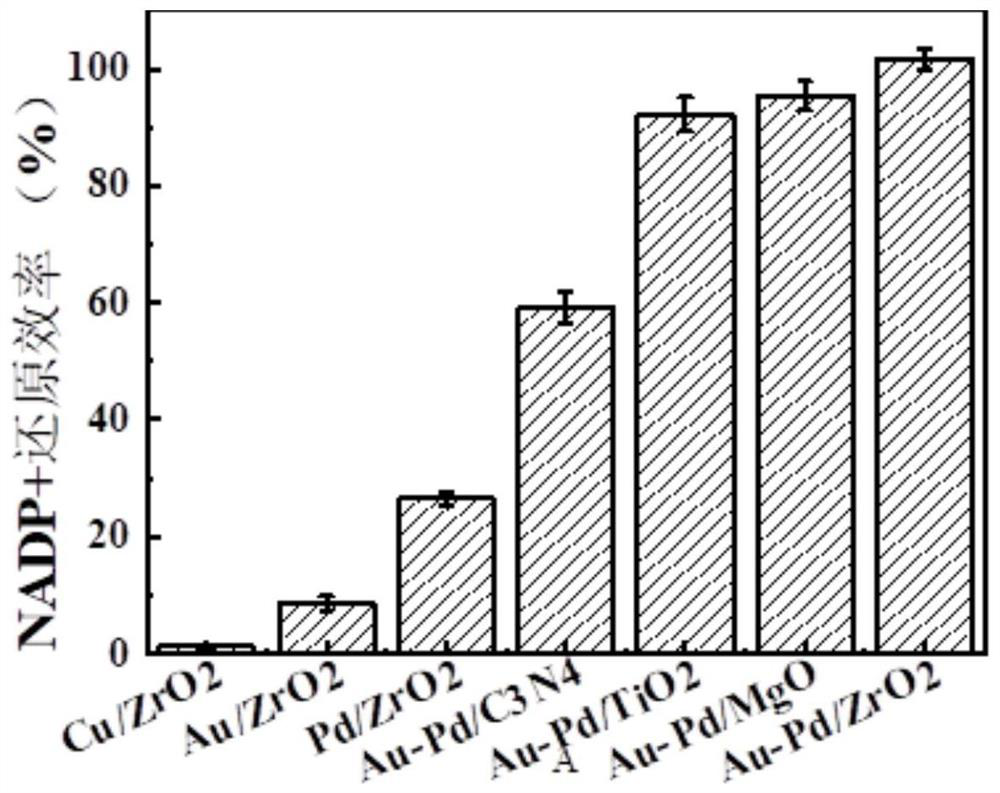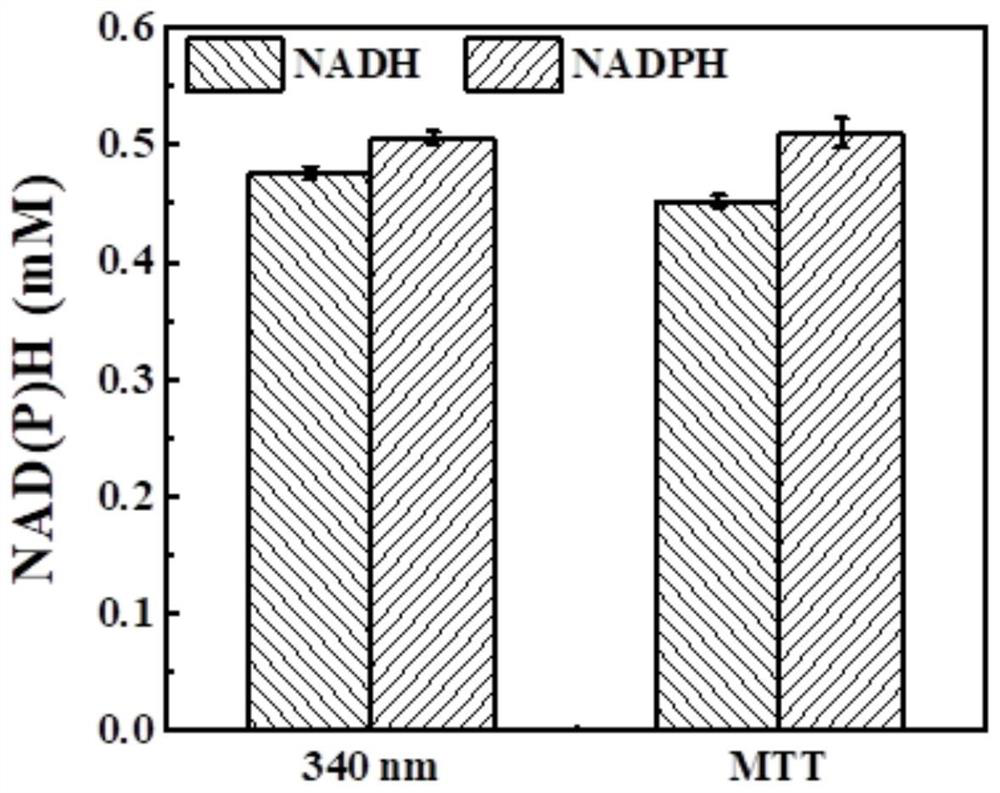Method for catalytic regeneration of NAD(P)H by supported metal catalyst
A metal catalyst and supported technology, which is applied in the field of supported metal catalyst catalytic regeneration of NADH, can solve the problems of low coenzyme regeneration efficiency and long reaction time, and achieve the effect of eliminating metal toxicity, easy operation and mild reaction conditions
- Summary
- Abstract
- Description
- Claims
- Application Information
AI Technical Summary
Problems solved by technology
Method used
Image
Examples
Embodiment approach
[0048] As mentioned earlier, the existing NAD(P)H regeneration process is not satisfactory, and there are some problems in one way or another. For example, some NAD(P)H regeneration processes require toxic and expensive electron mediators ([Cp* Rh(bpy)H 2 O] 2+ ) participation and poor selectivity; some NAD(P)H regeneration processes have low regeneration efficiency and long reaction time; in view of this, the present inventors have conducted a large amount of research on NAD(P)H regeneration processes.
[0049] The present inventors have found that a toxic electron mediator ([Cp*Rh(bpy)H 2 O] 2+ ), the regenerated coenzyme has electron transfer activity detected by the MTT method. The method has the advantages of mild reaction conditions, high coenzyme regeneration efficiency, rapid reaction, high selectivity, environmental friendliness, simple and easy operation, etc.; thereby obtaining the present invention.
[0050] Therefore, the method for the catalyzed regeneration ...
Embodiment 1
[0083] Embodiment 1: Supported bimetallic nanocatalyst and supported single metal nanocatalyst to NADP + reduction
[0084] Contain 0.5mmol / L oxidized coenzyme NADP in 2mL + Add 5mg of supported metal catalyst to the buffer solution of 200mmol / L triethanolamine, so that the working concentration of the catalyst is 2.5mg / mL, control the temperature at 25°C, stir at 600rpm for 240min, and use the 340nm ultraviolet absorption method to detect the reduced coenzyme NADPH in the reaction system The concentration of supported bimetallic nanocatalysts and supported monometallic nanocatalysts on NADP + The restored comparison results are as follows figure 1 shown.
[0085] Compared figure 1 Supported bimetallic nanocatalysts and supported monometallic nanocatalysts in NADP + The restoration results can be seen. The regeneration activity of supported monometallic catalyst copper and gold to NADPH is very low, and the regeneration efficiency of monometallic palladium to NADPH can r...
Embodiment 2
[0086] Embodiment 2: 340nm ultraviolet absorption method and the NAD(P)H concentration of the supported bimetal nanocatalyst regeneration that MTT method detects
[0087] Contain 0.5mmol / L oxidized coenzyme NAD(P) in 2mL + Add 5mg of supported gold-palladium bimetallic nanocatalyst to the buffer solution of 200mmol / L triethanolamine, so that the working concentration of the catalyst is 2.5mg / mL, control the temperature at 25°C, stir at 600rpm for 240min, and use the 340nm ultraviolet absorption method to detect the reaction system The total amount of the reduced coenzyme NAD(P)H in the medium; the concentration of 1,4-NAD(P)H with electron transfer activity in the reaction system was detected by the MTT method, and the results were as follows figure 2 shown.
[0088] Compared figure 2 The NAD(P)H results of the regeneration of the supported bimetallic nanocatalysts detected by the 340nm ultraviolet absorption method and the MTT method show that the supported gold-palladium...
PUM
 Login to View More
Login to View More Abstract
Description
Claims
Application Information
 Login to View More
Login to View More - R&D
- Intellectual Property
- Life Sciences
- Materials
- Tech Scout
- Unparalleled Data Quality
- Higher Quality Content
- 60% Fewer Hallucinations
Browse by: Latest US Patents, China's latest patents, Technical Efficacy Thesaurus, Application Domain, Technology Topic, Popular Technical Reports.
© 2025 PatSnap. All rights reserved.Legal|Privacy policy|Modern Slavery Act Transparency Statement|Sitemap|About US| Contact US: help@patsnap.com



